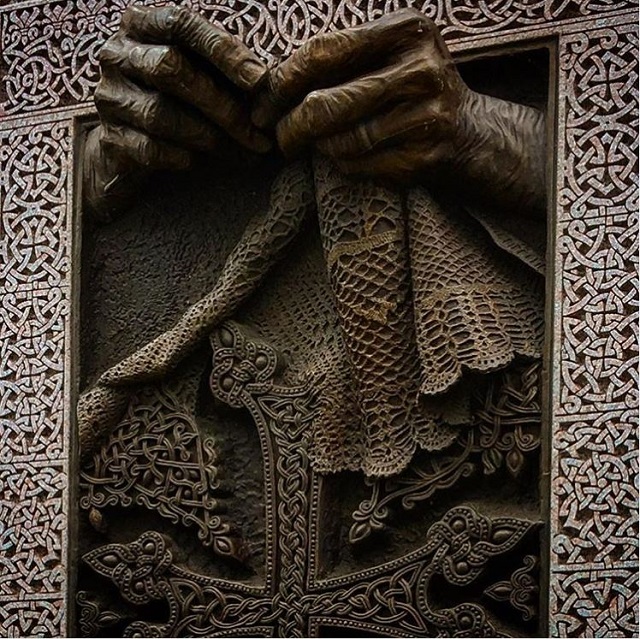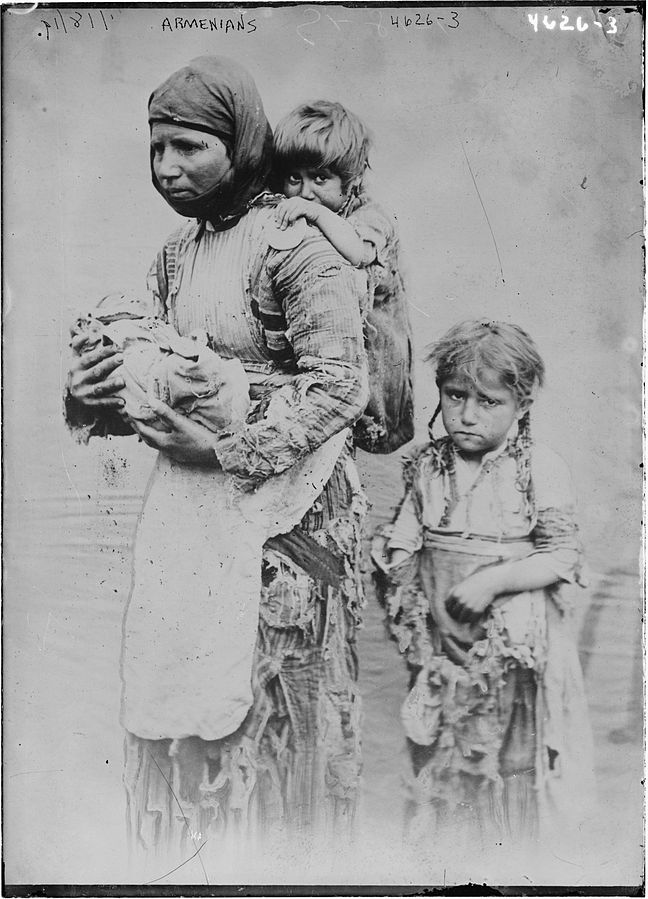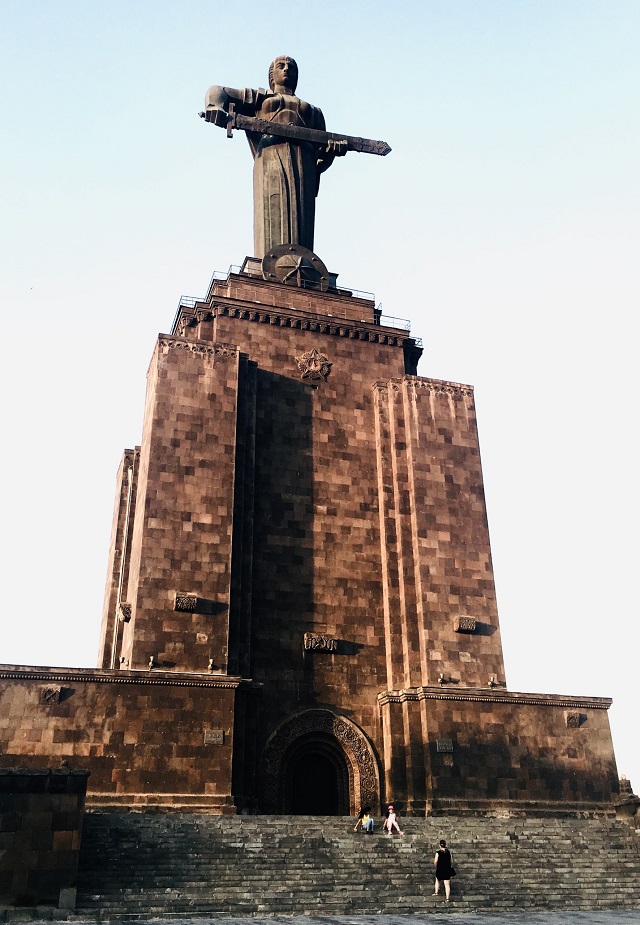The Armenian Weekly. Throughout history, there have been numerous examples where the state has used the symbol of the mother to further a national narrative. For instance in Pahlavi Iran, the shah connected motherhood with patriotism as a way to increase the citizen’s obedience to the state. The mother is a suitable archetype as it is she who shapes the child’s development and consequently the development of the nation’s future citizen. Thus the mother, in molding the citizen, holds the success of the nation in her hands. However, this association can be extended to stateless people as well. For stateless people, the image of the mother plays a critical role in defining a national identity when there is no functioning state delineating that narrative. For Armenians, the image of the mother has been invoked during the Zartonk period, the revolutionary movement, the Genocide and the Soviet era, each time depicting certain national aspirations, albeit in various capacities, and each time acting as a central figure in the development of Armenian national identity.
Zartonk: The Mother as Student and Educator
The mid-19th century is popularly referred to as the Zartonk period of Armenian history. Translated literally to ‘awakening,’ Zartonk is considered the period when the modern national Armenian identity crystallized. A critical component of this societal transformation involved the mental and educational development of the Armenians.
Mkrtich Khrimian Hayrik was one of the primary figures of this period. Though known for his role in stimulating nationalist sentiment, much of his life was dedicated to the enlightenment of the Armenian peasantry. Khrimian emphasized the importance of education by invoking the image of the Armenian mother. One example of this is in his book Papik ev Tornik, a tale of fiction where a village grandfather passes on important lessons to his grandson. However, in the final chapter, the grandfather addresses the whole village and discusses the education of women.
Read also
In this chapter, Khrimian countered popular beliefs that educating women would be problematic by arguing that, actually, an uneducated woman was more dangerous for the family than an uneducated man. By using the image of the Armenian mother, he created a story that was familiar to the peasants and allowed him an entry-point with which to communicate his message. Since the mother is the child’s first teacher, it only behooves the community and, consequently the nation, that she be educated in order to produce educated citizens. Khrimian wrote,
Who is it who answers the curious child’s every question with a sweet and motherly tenderness? The mother.
When a child raises their eyes to the sky and sees luminous things and asks what is it, the mother answers it is the sun, the moon and the stars, God created them for us to give us light both day and night.
Khrimian understood the relationship between the mother and the nation; the mother provides the child with his or her primary education and, as such, it is imperative that the mother herself be educated also.
The Armenian Revolutionary Movement: The Mother as Patriot
The late 19th century marked the start of the Armenian revolutionary movement when early political organizations and leaders began spreading ideas of national liberation. In this case, the mother is used to embody both the spirit of the revolutionary and the unified attitude required of Armenians at the time.
One of the most poignant and frequently used depictions of this is the mother as the stoic parent preparing her son for war. It is a jarring portrayal showing the mother, the ultimate symbol of love, encouraging her son to enter the battlefield while accepting the possibility of death in service of the Armenian nation. The imagery often weaves back and forth between tender maternal gestures and a solemn acceptance of a son’s impending death. This depiction of the mother is present in two well-known folk songs, “Aghasi’s Mother’s Song” and “The Soldier’s Mother’s Song.”
Raphael Patkanian was born in New Nakhijevan (Rostov-on-don, Russia) and came of age during the Zartonk period. Though he began his literary career writing poems of love, fun and youth, he quickly moved on to discuss ideas such as freedom from oppression and patriotism as he started dedicating himself to the enlightenment of the Armenian nation. His poem begins with a familiar scene of the mother watching her child sleep peacefully.
Awake, my tender babe, open those radiant eyes…
That is enough [sleep], my sweet angel
She implores the child to wake and meet his destiny as a hero of the Armenian nation. She goes on to speak to the child as he sleeps, telling him:
With my own hands I have sewn a belt of gold thread
And from the belt I have hung a sword
That I myself have sharpened
How much will you sleep?
Take your death-bringing sword
Your Armenian nation is sobbing,
Its hands and feet, chained
Your brothers in bondage…
You will wipe the tears of the Armenian
And stop the cries and lamentations
– Awake, my babe
The mother Patkanian depicts is not beleaguered by sadness at the prospect of her son leaving for war. On the contrary, she is eager and impatient for him to rise and take his place as a national hero.
“Soldier’s Mother’s Song” was written by B.V. Natanian. The song is similarly formatted as Patkanian’s, with a mother speaking to her sleeping son. However, in Natanian’s poem, the imagery and lyrics are intensified.
The mother begins preparing the child for battle as trumpets of war ring in the background. The poem shows her juxtaposing the objects of his childhood with those of a soldier’s:
I have prepared your gun as I did your books when you’d go to school
Let me tie the sword to your waist
And a shield to your shoulder
Let the holy flag of your fatherland billow on your right arm
Instead of your book, here is your sword
Instead of your paper, the battlefield
Go die for your nation
And let your motherland live favorably
Yet the final stanzas of the poem provide the most visceral lines.
Go save your fatherland,
If not, why did I give birth to you?
For 20 years I nourished you,
Until you grew,
Your mother dies for you
And you go die for your nation…
It’s no bother if death finds you,
It is then that the nation is free.
Unlike Patkanian’s poem, the child’s death in exchange for the survival of the Armenian nation is explicitly mentioned. Not only does the mother acknowledge this possibility, but she welcomes the prospect of her child’s death if it means the Armenian nation will flourish.
The titles of both poems center around the mother, despite the fact that it is the child who will be facing death. The poems are less about the soldier going to fight than they are about the mother, the symbol of what is needed of Armenians at the time: a wholehearted acceptance of the forthcoming difficulties and an understanding that she is necessary for the liberation of the Armenian people. In creating the image of a mother who is willing to give her child for this idea, Patkanian and Natanian tell the reader these are extraordinary times and Armenians must be willing to make extraordinary sacrifices.
The Armenian Genocide: The Mother as Survivor
A weary mother is sitting in the desert, surrounded by her tired and famished children. They have been taken from their homes and forced to take part in the brutal march. Now they sit in the desert as the mother slowly writes the letters of the Armenian alphabet in the sand in order to teach her children this revered code, the key to their history. With this frequently used example, motherhood becomes an exhortation to the ragged, almost lifeless, nation to survive.
Perhaps no other period in this study can be expressed as simply with familiar images of the mother. The photo of the mother carrying her child and whatever possessions she could manage on her back has been etched into the mind of most Armenians around the world. Here, as in the previous example, she is not remembered solely for her haggard and tortured appearance, but also because of her commitment to her child in spite of the horrifying reality she faced.
The mother bears the dual burdens of national and familial survival. Her survival equates to the survival of the nation as only she could pass down the culture and mother tongue to the next generation. The mother’s obstinacy in keeping her family and culture alive served as a guide when there was barely a hope of a nation to maintain.
Soviet Rule: The Mother as Defender
Armenian national sentiment was expected to regulate itself according to expectations of the Soviet system which frequently meant navigating through the often contradictory Soviet policy toward nationalism. Within this framework, Armenian leaders needed to temper nationalist thought to fit the Soviet mold. What emerged was the Armenian mother as a subtly subversive element who was prepared to protect her family and people.
Soviet policy regarding the development of national identities rested on two contradictory policies. There was a degree of support in fostering a concept of the national identity, but only to prevent the fermentation of defensive nationalism. “National identity was systematically promoted at the sub-state level in the form of national republics with their own national elites, languages and cultures.” This policy collided with the second which involved the gradual integration of individual national identities under one dominant, Soviet identity. In this vein, the intelligentsia of the Armenian socialist republic needed to balance latent nationalism within the framework of the Soviet system. This led to an interesting model termed “Apricot socialism” by Maike Lehmann.
Lehmann explains that the apricot, “the Armenian national fruit whose skin often samples the whole color spectrum between crimson red and light orange, serves as a metaphor for how people in Soviet Armenia imagined the rules and goals of the Soviet community.” He argues that Armenian committee members neither blindly followed Soviet edicts nor were impassioned revolutionaries battling for their national cause. They struck a balance between following Soviet dictates and subtly asserting their agency. Thus, Soviet Armenians often found themselves communicating nationalist sentiment in covert ways in order to maintain this tenuous balance. One such example is the Mother Armenia statue in Yerevan.
The Mother Armenia statue, which replaced the statue of Joseph Stalin in 1967, still stands today in Yerevan’s Victory Park. The original pedestal, which stood at the foot of the Stalin statue, was designed by Raphael Israyelyan and kept intact. The Mother Armenia statue was created by sculptor Ara Harutyunyan and stands at 72.2 feet. The depicted mother figure wears traditional garments similar to what had been found in an archaeological dig in the Ararat Valley. She is a towering figure equipped with both a shield and a sword. The sword is not raised fully and is lifted only to her torso. Initially, the sword was intended to be fully raised, but it was later decided that this might send an overly aggressive message to neighboring nations. As such, Harutyunyan decided Mother Armenia would carry the sword half-raised because “although we live in peace now, if need be, she will raise the sword fully.”
The facial features of Mother Armenia are sharp and sedate. Though they were modeled after an Armenian woman named Jenya Muradyan, the features Harutyunyan crafted were actually much harsher and more striking than Muradyan’s more delicate, feminine features. According to the sculptor, his goal was to depict an ideal figure for Mother Armenia. “I sculpted a mighty, proud, powerful, resolute, female character who is ready to defend her children, her fatherland. That is Mother Armenia who is not afraid of the enemy.” Before all else, the priorities of Mother Armenia are her children and her fatherland. She is the preserver and defender of the Armenian family and Armenia itself and, according to Harutyunyan’s vision, she will protect both by whatever means. The Mother Armenia statue and its veiled images of national resoluteness served as a symbol to Soviet Armenians that though they were currently under imperial rule, nationalist sentiments remained, and fierce protectiveness brewed just below the surface.
In the absence of a state apparatus to curate a national identity, a stateless people develops its own means to construct that concept. In order to do so, it adopts certain images and imbues them with nationalist meaning. This is evident in the dynamic portrayal of the mother throughout different stages of Armenian history. The depiction of the mother was used in Armenian popular discourse to convey important and prevalent messages of the period.
By associating the image of the mother with various national characteristics, the stateless people can intensify its message by combining this culturally accepted and revered figure with the contemporary national imperative. The mother’s education translates into the enlightenment of the nation, her willingness to sacrifice everything is an expression of the soldier’s grand duty, her survival signals the endurance of the nearly exterminated, her subtle strength is the disguised boldness of a subject nation within a sprawling empire. Though her character and what she symbolizes shifts over time, the image of the Armenian mother remains a fixture in the national narrative and is a pivotal figure in its evolution and development.
Nora Bairamian
Main caption: “A Mother’s Hands,” monument dedicated to victims of the Armenian Genocide, Lowell City Hall, July 2017 (Photo: former Weekly editor Pete Nersesian)


























































